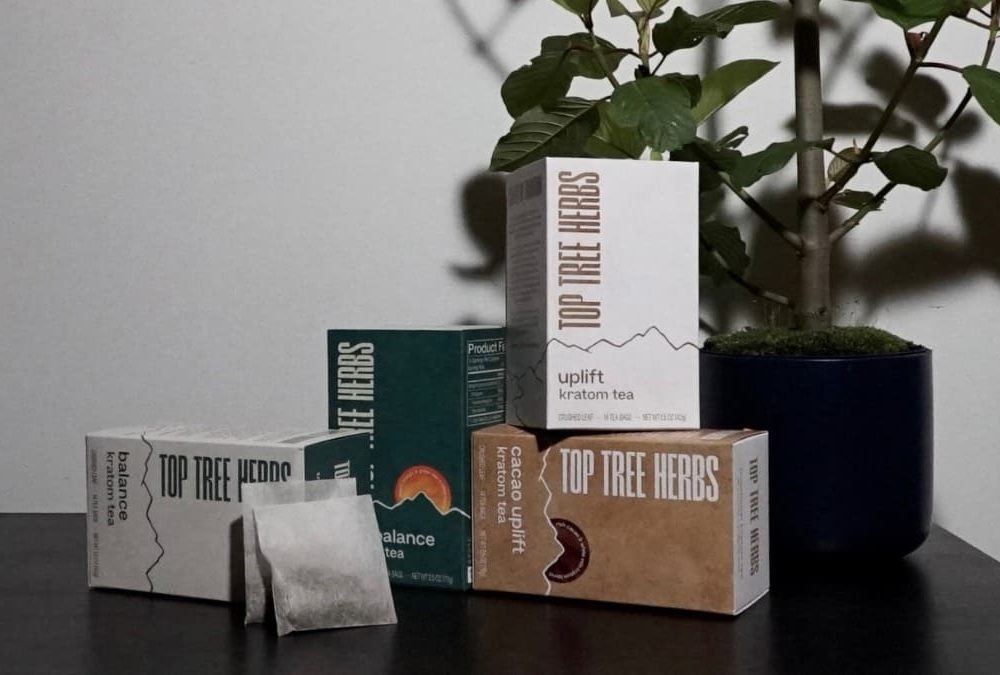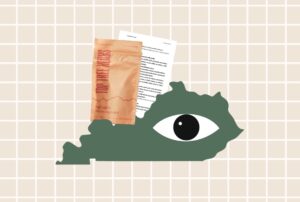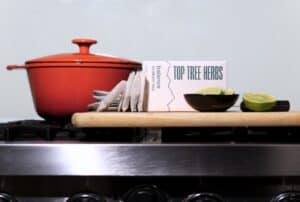To microdose kratom is to refer to the act of ingesting small amounts of kratom. In this blog, we’ll first discuss what microdosing means in general. Then, we’ll get into the traditions behind microdosing kratom, the perks of microdosing kratom, and how to microdose kratom like a pro.
Cross-Category Perspective: The Origins and Expansion of Microdosing
The original meaning of “microdosing” was to take small amount of psychedelics. These psychedelics are generally serotonergic, such as psilocybin or LSD. In the recent past, ibogaine and AMT were legal, pharmaceutical microdoses.
To microdose, one takes a sub-perceptual amount of that substance. In psilocybin-containing mushrooms, for example, a microdose entails taking just a little under 5mg of psilocybin. Unfortunately there is no consistent way to translate that precision in dosing to the dried fruiting body of a Psilocybe genus mushroom.
Variables such as harvest time, size, species, and growing techniques will affect the potency of the mushroom. So determining what amount of the fruiting body to consume for a microdose is nearly impossible.
For LSD, generally, a perceptual psychedelic dose begins around the 20-25 microgram mark. That means that anything below that—with the unique variants of each user’s physiology taken into consideration—constitutes a microdose.
The purpose behind microdosing psychedelics is to get the benefits that one sees from high-dose psychedelic experiences in “micro” quantities. These benefits of higher doses include openness, appreciation, creativity, mood boosts, as well as increased attention. Yet microdosing is still being researched for its therapeutic purposes, and the results are mixed.
For many, microdosing is an easier, more convenient way to consume psychedelics in a functional manner. It’s easier to plan to microdose tea made from psychedelic mushrooms, for example, than it is to eat five dried grams in silent darkness. Microdosing will allow you to carry on with your typical day, while macrodosing may make the term “day” lose all meaning.
Tiny Tokes: Microdosing Cannabis
Today, the technique of microdosing extends beyond the psychedelic community. Recently, the microdosing method has been embraced by the cannabis industry. How do you microdose cannabis? Generally, one will take a very low dose of a cannabinoid orally. To reiterate, these low doses or “servings” are meant to stay below that of the perceptual level in which psychoactivity becomes noticeable.
The THC variants, such as delta-8, delta-9-THC, and THC-P, are usually psychoactive. The sub-perceptual dose, taken orally, will greatly vary between users. But, those without tolerance will generally find the sub-perceptual amount of delta-9-THC, the most common “x-THC-x”, to be less than 1 or 2 milligrams. For delta-8-THC, this amount could be 20% greater, at around 3 to 5 mg.
In regards to the other naturally occurring cannabinoids, the psychoactivity is much less pronounced. Because one doesn’t have a threshold to stay below, microdosing, definitionally, doesn’t make sense. You are not trying to avoid any of the potentially unsavory or anxious effects that some get when taking THC.
That said, the sub-perceptual dose for CBD, CBN, CBG, etc., will vary between 10-100mg depending on the person. In general, rarely do conversations about microdosing encroach upon the use of already non-psychoactive substances. The reported psychoactivity that comes from higher servings of these non-psychoactive cannabinoids are likely just the result of residual THC left from the extraction.
Cannabinoids are conducive to microdosing because they have numerous benefits. These traits are all present at the “macrodose” level but exert similar effects when microdosed as well.
The Dose Makes All the Difference
Toxicity generally occurs with any compound at high levels of exposure. Usually, the toxic effects will be located in the stomach, kidney, or liver. Toxicity is usually located there because of a process called first-pass metabolism.
This serving dependent effect is a complicated but incredibly important aspect of pharmacology. Anything can be toxic. Water in sufficiently high quantities can be toxic to the point of being deadly. As Paracelsus said, “the difference between a medicine and a poison is the dose. It is the dose that makes the poison.”
What’s the Point of Microdosing Kratom?
With these facts in mind, let’s now move on to kratom. Kratom is much less well-studied than either of the psychedelics we listed above or the cannabinoids (though both psychedelics and cannabis are relatively understudied compared to other beneficial and therapeutic substances on the market).
Because of this lack of research, many features of these promising compounds have yet to be discovered.
So, why microdose kratom in the first place? Well, the intention of microdosing kratom is to enjoy some of the benefits of kratom without any psychoactivity. This augmentation is already very light—for many, it’s more mild than a cup of coffee. Tea serving sizes usually start with the recommendation of three grams – one tea bag – steeped as a tea for 20 minutes.
To go below this is to take a serving that would not be discernible from a non-kratom tea.
Is Microdosing Kratom the Traditional Form of Consumption?
The purpose of microdosing with anything is that it will exert sub-perceptual, beneficial physiological effects. Unfortunately kratom hasn’t been robustly studied, so the microdosing effects of it are not yet known to science.
Kratom tea falls within the category of a natural, traditionally used functional food item. In its history of use in Thailand, it hasn’t been linked to any toxic effects.
In fact, the traditional consumption of kratom in Thailand would be akin, in a lot of ways, to what we are classifying as “microdosing” kratom. In the midst of a long, hard day of work, many a Thai farmer consumes kratom.
Kratom trees grow abundantly and naturally throughout Southeast Asia. Traditionally, locals pluck the leaf and strip it of its central vein. Then they roll the kratom leaf into a small tube, making a small quid.
Then they insert the quid—which is about the size of a mini candy bar—into their mouth. First, they chew it once or twice, move it about the mouth from cheek to cheek with the tongue, and discard the leaf material. They chew it and spit it out within seconds, rarely more than a minute.
Micro Means Less Strong
There are several reasons to believe that this pattern of use is akin to microdosing. One, fresh kratom leaves likely have very little, if any, of the strongest alkaloids that scientists have detected in kratom: 7-hydroxymitragynine (7-OH). 7-OH is the oxidative degradation byproduct of mitragynine, the most abundant and commonly detected kratom alkaloid.
This degraded byproduct is upwards of 30 times stronger than mitragynine. So a little 7-OH goes a long way.
It is hypothesized that the degradation that results in the formation of 7-OH comes primarily from the sun-drying technique that modern kratom farmers use to dehydrate their kratom before shipping. 7-OH typically makes up less than 0.05% of the dried leaf mass in commercially-available kratom powders.
With this in mind, it makes sense that the farmer who chews on the fresh leaf, even if he or she absorbed all the available alkaloids, is getting a less powerful experience than someone who had chewed on the same amount of dried leaf.
Is Kratom Stronger As Tea?
Compared to other kratom preparations, fresh kratom leaves have the least amount of surface area. Out of all the different types of kratom, powdered (or micronized) kratom is the product most commonly imported into the country—simply because it is the most economical way to ship it in bulk. As a result far more people are familiar with kratom powder than tea, even though kratom powder is neither the best kratom product nor even a traditional form of kratom consumption.
Dried kratom sheds a majority of its weight in water loss. This, obviously, makes for a cheaper shipping price. With that in mind, it is powdered to the finest grain possible, ensuring no wasted space in the shipping container.
Micronizing the dried leaf atomizes it into millions of fine pieces. This is to say that each little grain of the leaf can touch the water or stomach membrane. The more surface area that is exposed to a solvent—in this case, water–the quicker the extract homogenizes into the solution. This is simply a well-documented physical and chemical phenomenon. With fresh leaves, their surface area is limited to the exterior.
An Analogy for Better Understanding Natural Product Absorption
Imagine a jigsaw puzzle. When the pieces are separate, you’re able to see more of them, all of their thin, cardboard edges. That is a bit of surface area, just like the thin edges of the powdered kratom. When the puzzle is finished and a complete image, then those edges are hidden in the whole, except for the absolute edge of the puzzle. With leaves, the same is true: as a whole leaf, it has minimal surface area, when powdered, it has the maximum.
While powdered kratom leaves are the easiest to ship overseas, kratom powder does not make the best kratom tea. In fact, we’d go so far as to say that using kratom powder is the worst way to make kratom tea.
For one, it is so small that it permeates through the porous paper of tea bags. (And it goes without saying that you cannot use a steel mesh tea ball.) And if you do try to make kratom tea with powder using coffee filters or cheesecloth, you’ll end up with a cup full of gritty sludge.
This is why Top Tree uses premium, hand-crushed kratom leaves. It optimizes the surface area needed to get the alkaloids we want into the tea without the feeling of dragging sludgy kratom sandpaper across your tongue, one of the drawbacks to the toss-and-wash method of kratom.
All this talk of kratom leaf surface area and size is to say that the kratom farmers who traditionally chew the whole fresh leaf for only a few seconds are coming into contact with very little of the leaf’s surface area. Therefore, it’s reasonable to assume that the amount of alkaloids absorbed in this process is “micro.”
How Much Kratom To Use When Microdosing?
Third, and least obvious, is how consistently, year after year, a traditional kratom consumer will consume the same amount of leaves on a daily basis. To us, this implies that the amount that is consumed is not great enough to cause an upregulation of the respective receptors and therefore does not impart, at least obviously, a tolerance.
This is a crucial—yet often overlooked—aspect of microdosing. When done correctly, microdosing kratom should allow the user’s neurochemistry to reach a homeostatic level. Meaning that by the time you take kratom again, the alkaloids from the previous microdose would have already been expelled, and the brain would have either not, or only very minorly, upregulated the receptor types docked to by each alkaloid.
With this traditional anchor in microdosing kratom, it is easy to see why we are confident in touting the benefits of it without waiting for western studies to catch up. In fact, microdosing kratom is the best way for beginners to consume kratom.
Kratom Tea vs Caffeine
After trying kratom tea in different serving sizes, you might decide that you like the psychoactive effects (as well as the more sharply felt physiological relief) that come from having more. Great! By titrating up to the amount that is best for you, you will have avoided accidentally taking too much, which, while harmless, can be unpleasant. Just start with a 3g tea bag, and slowly increase from there.
Now, time for a personal anecdote. When the author of this post was still in his youth, he was introduced to espresso while working at his parent’s café. This story begins when he was in the process of learning how to make espresso.
Pulling an espresso is an art form that demands experience; nobody makes a perfect espresso drink on the first attempt. In an effort not to waste the botched espresso he made as part of the training, he drank them.
With about 11 double shots, or (1 shot roughly equals 60mg of caffeine, 22x60mg) 1320mg of caffeine in him, the author remembers feeling a brief rush, followed by a horrendous stomach ache, brain fog, sweaty hands, and general anxiety. While this wasn’t, per se, dangerous, it is correct to consider this an overdose.
Overconsumption of kratom can be similar to overconsumption of coffee or caffeinated tea. It is remarkably safe but still demands caution. Simply starting low and working your way up is an easy way of improving your overall experience.
Who Should Consider Microdosing Kratom?
If you’re new to kratom and trying it for the first time, microdosing kratom (or drinking a mild kratom tea) is the best way to take kratom as a beginner. This allows you to slowly get used to the alkaloids’ effects before slowly working up to find your ideal serving size.
Furthermore, if you’re interested in trying different kratom vein colors, you may prefer to microdose the new variety to get used to it. You may find that taking things slow when trying new blends can help you appreciate some of the subtle differences between the three kratom colors.
Lastly, if you’re trying to reduce your kratom tolerance and get a fresh start with your kratom experience, microdosing kratom tea is an excellent way to get your serving size back down. After microdosing kratom for some time, you may find that you can appreciate kratom in smaller amounts.
Microdosing Tea vs Powdered Kratom
What makes kratom tea stand out is that it is incredibly hard to brew a tea strong enough to be equivalent to the overdose this author felt following his excessive espresso consumption. Taking kratom via the toss-and-wash method and encapsulated powder or extracts makes it much easier to reach an uncomfortable level.
For this reason, among many others, we recommend that you consume kratom the traditional way, as a tea—or, when available—chewing it as a fresh leaf. Fortunately, knowing how to brew kratom tea is pretty easy if you use tea bags, and it’s far more palatable than powder.
Why Tea Is the Best Way To Consume (and Microdose) Kratom
If you’re interested in microdosing kratom, the easiest (and most enjoyable) way is to brew kratom tea. Depending on how you brew it, kratom tea is not necessarily “weaker” than powder, but it’s easier to control the strength and avoid drinking too much. Beginners can start with one kratom tea bag and sip until satisfied, or take other steps to weaken or strengthen their kratom tea.
Hence, kratom tea makes consuming this remarkable plant highly accessible to beginners and experienced kratom enthusiasts alike.
To microdose kratom tea, use more water per one kratom tea bag to dilute it, and then refrigerate what’s left over for another serving. You can also re-brew kratom tea bags a second time (or brew twice) to enjoy slightly milder effects of kratom.
Lastly, for stronger kratom tea, you can add a second tea bag into your cup, thermos, or other kratom teaware with your re-brew.
How to Microdose Kratom: Mindfulness Is Key
If you enjoy tea culture, microdosing tea made from kratom is an excellent way to practice mindfulness. You can evencreate a diluted kratom tea or keep your serving size small (such as by cutting open the tea bag and putting some of the tea into an infuser or your own empty tea bag). That being said, it is far easier to simply drink less of the tea you brew from a full tea bag.
As you sip your tea, try to focus on breathing, the body, and the mind. It can be quite a meditative experience to become more aware of the effects as you increase your serving over time.
In other cultures, tea drinking is an experience worthy of basking in. Fans of pu-ehr may be familiar with cha qi and other tea terms used to describe different mouth feels, tastes, and states of mind that become noticeable when drinking tea mindfully.
Even if you prefer to start with a full kratom tea bag (as opposed to microdosing a smaller serving), it’s good to set aside time to enjoy it and feel both physically and mentally present, staying relaxed yet focused.
All of these things are good to keep in mind as you branch out into delicious kratom tea recipes and herbal blends, each of which deserves appreciation!
A Final Reminder That Less is More
If microdosing kratom isn’t enough for you, all you need to do is add one of our unique varieties of crushed-leaf kratom tea bags for sale into your brew, and you’ll be all set to have as strong a cup as you’d like! But again, we recommend that you start slow and small, then gradually work your way up to the serving size which works best for you!





